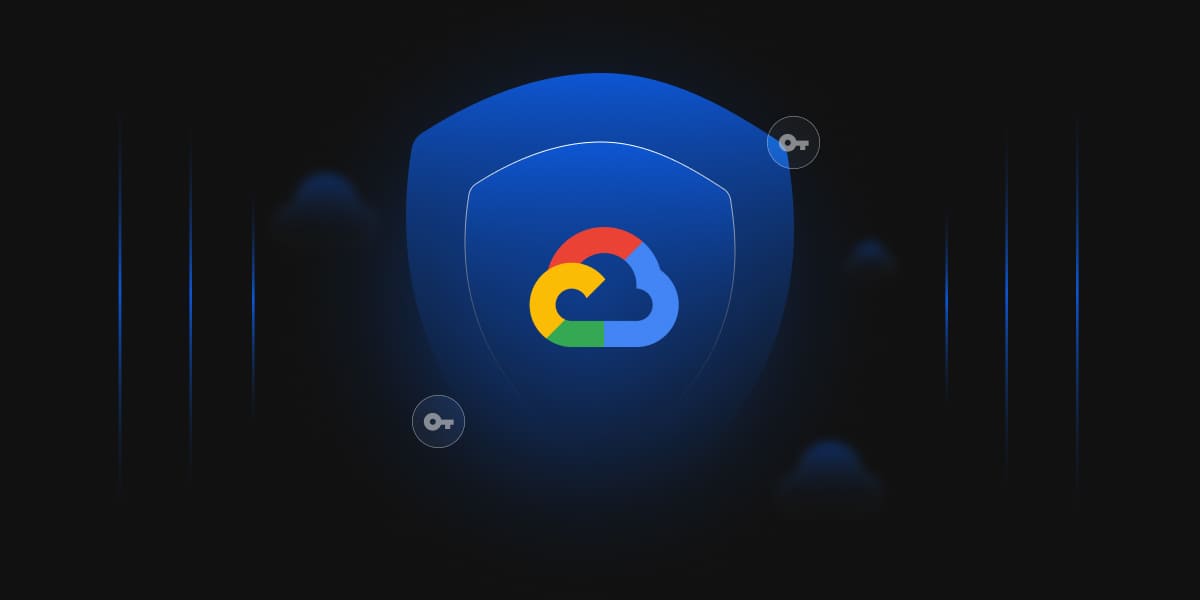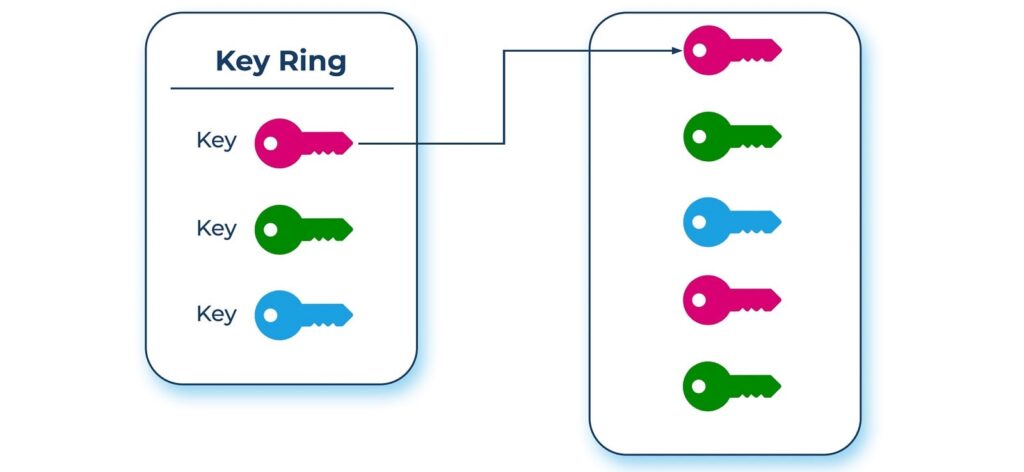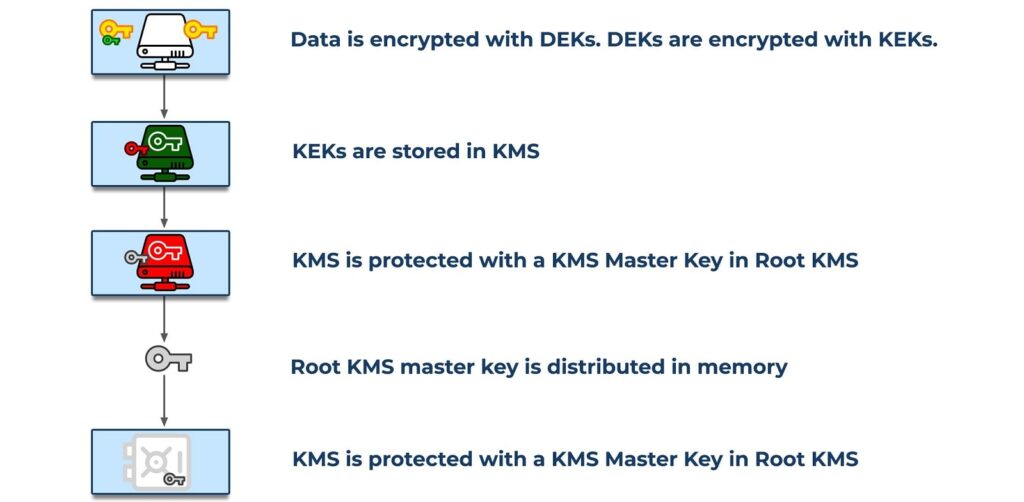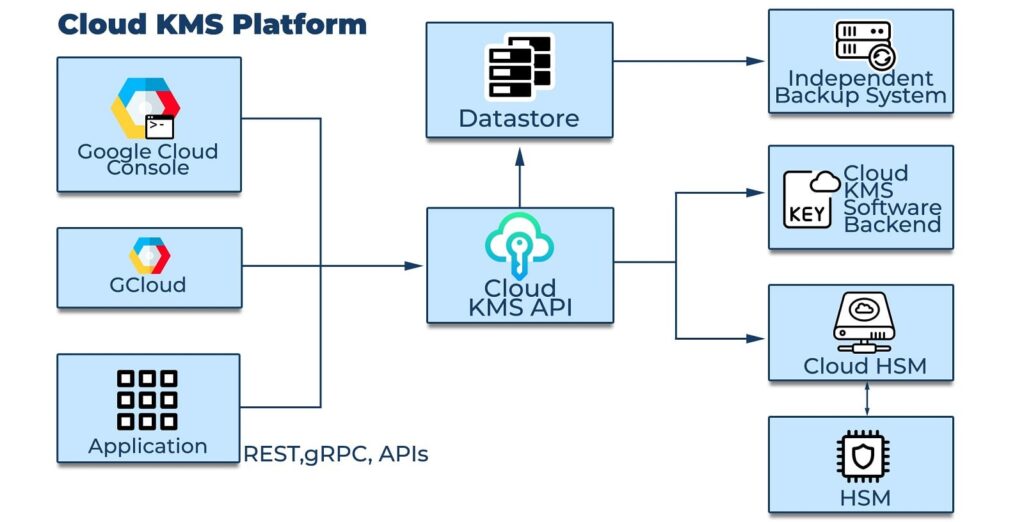Google Cloud Security- Key Management Services


In this article, we will take a closer look at Google’s Cloud Key Management Services. When users store data into Google Cloud, the data is automatically encrypted at rest. We use Google’s Cloud Key Management service to gain better control over managing the encrypted data-at-rest and encryption keys.
Cloud KMS lets users manage cryptographic keys in a central cloud service for direct use or use with other resources and applications. The keys that have to be used must be from one of these sources:

Figure: Cloud EKM providing bridge between KMS and External Key Manager
This section describes keys, key versions, and the grouping of keys into keyrings. The following diagram illustrates key groupings.

Key: A named object which represents a cryptographic key. It is a pointer to a key, and the actual bits or the key may change as we rotate the keys or create newer versions of the keys.
Cloud KMS supports both asymmetric keys and symmetric keys. A symmetric key is used for symmetric encryption to protect some corpus of data, such as using AES-256 in GCM mode to encrypt a block of plaintext. An asymmetric key can be used for asymmetric encryption or for creating digital signatures.
In this section, we discuss a few points about additional parameters associated to Google CloudKMS resources such as keys and keyrings.
The following diagram illustrates the key hierarchy of Google’s internal Key Management Service. Cloud KMS leverages Google’s internal KMS in that Cloud KMS-encrypted keys are wrapped by Google KMS. Cloud KMS uses the same root of trust as Google KMS.

The Cloud KMS platform supports multiple cryptographic algorithms and provides methods to encrypt and digitally sign using both hardware and software-backed keys.

The diagram shows the main components of the Cloud KMS platform.Administrators access key management services by using the Google Cloud Console, the gcloud command-line tool, or through applications implementing the REST or gRPC APIs.Applications access key management services using a REST API or gRPC.
Applications can use Google services that are enabled to use customer-managed encryption keys (CMEK). CMEK, in turn, uses the Cloud KMS API. The Cloud KMS API lets users use either software (Cloud KMS) or hardware (Cloud HSM) keys. Both software and hardware-based keys leverage Google’s redundant backup protections.
With the Cloud KMS platform, users can choose a protection level when creating a key to determine which key backend creates the key and performs all future cryptographic operations on that key.
CMEK lets users use the Cloud KMS platform to manage the encryption keys that these services use to help protect their data.Cloud KMS cryptographic operations are performed by FIPS 140-2 validated modules.
www.cloud.google.com/security-key-management